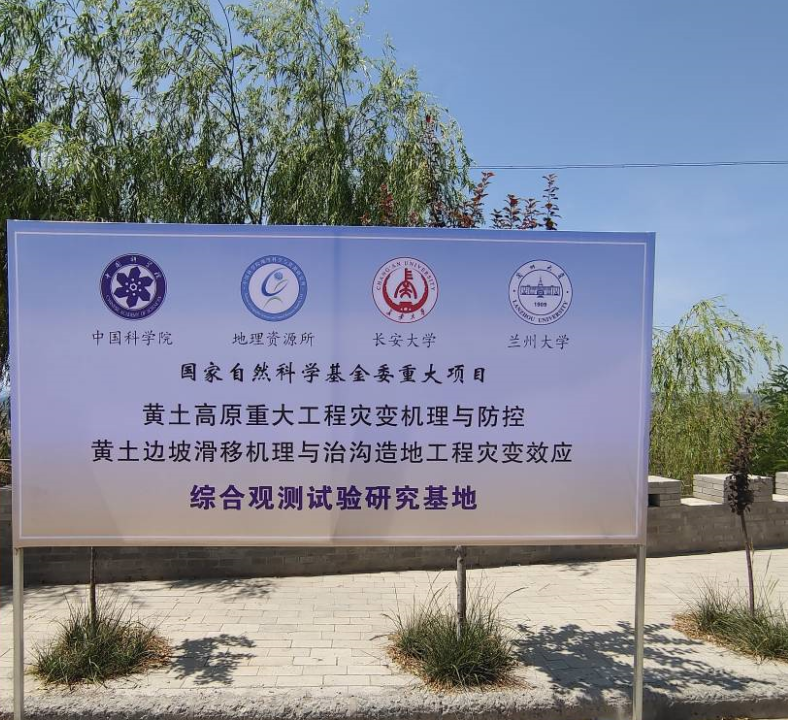On July 7, a research base of comprehensive observation and experiment supported by NSFC major project , “Hazard Mechanism and Catastrophic Effect Control of Disasters Caused by Mega-Engineering in Loess Plateau”, was established in Zhaojiawa, Jiaoyuangou Convenience Service Center, Suide. Institute of Geographic Resources of Chinese Academy of Sciences, Chang’an University, and Lanzhou University are collaboratively in in charge of the project.

The unprecedented risk of catastrophic slope slides associated with mega engineering constructions on the loess plateau poses great threats to the implementation of important national strategies as well as to the safety of people's lives and properties. However, the underlying mechanisms of the hazards are not well understood and many scientifical and technological issues still need to be addressed. Moreover, in dealing with such special and complex problems, no examples can be taken as reference from worldwide. In order to address the key issues on sliding mechanism of artificial slopes and catastrophic effects associated with mega engineering projects, four main themes will be specially investigated: (1)The forming mechanism of loess slope hazards and the multi-scale sliding mechanism of loess slope due to engineering disturbance; (2) The time-dependent characteristics of loess slope deformation and the multi-factor triggering mechanism of loess slope sliding;(3)The approaches to predict loess slope disaster and theoretical models of the dynamic processes ; (4) The prevention and control of mega engineered loess slopes, optimization theories for hazard prediction and mitigation.
The success of this project will benefit the mega engineering projects on the loess plateau as well as the safe implementation of important national strategies, including the One Belt and One Road Initiative for example. This will also contribute to the high quality sustainable development of the region and the society.

 Official website
Official website Chinese
Chinese